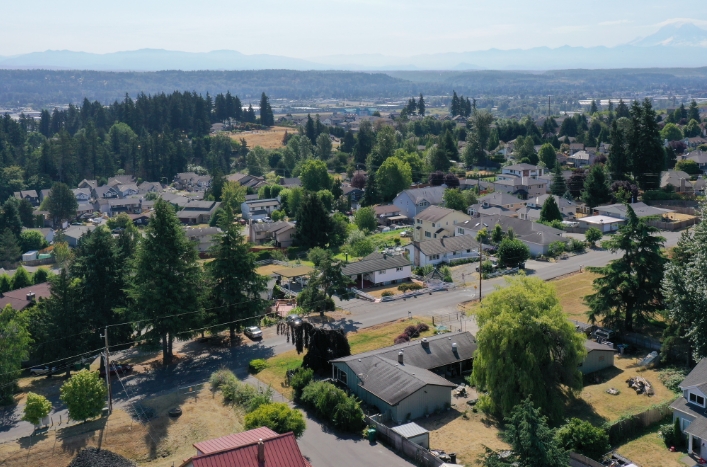Impact Fees

Washington State Impact Fees
Impact fees drive up the price of new houses across our state, making it even more difficult for families and individuals to purchase a home of their own. Below are some examples showing how much of a barrier impact fees can be to home ownership and some solutions to address these obstacles.
BIAW will be working hard during the next legislative session and beyond to bring forward solutions to reduce the burden impact fees have on a new home, allowing more people to become homeowners in Washington state.
What are impact fees?
Local governments under the GMA are authorized (not required) to impose impact fees.
Impact fees can only be used to fund a new or expanded public capital facility needed to directly address the increased demand for services created by a new development in the categories of:
Parks
Open spaces and recreational facilities
Fire
Additional or expanded fire stations
Traffic
Public roads, traffic signs, etc.
Schools
Additional or expanded school facilities
Understanding Impact Fees
View the dropdowns to learn more
Single-family vs. multi-family, who pays more?
The problem: Local jurisdictions can charge different impact fee rates for single-family residences than they do for multi-family residences. In many jurisdictions, multi-family units pay more! This is extremely disproportionate as often individuals purchasing multi-family units earn a lower income than those buying single-family homes.
The solution: The same impact fee rate should be applied to both single and multi-family residences. This will significantly reduce the burden on lower-income households.
Who collects what?
The problem: Not all jurisdictions collect impact fees or collect impact fees in all four categories. It is not clear which jurisdictions collect which fees, if any. This also means it is not easy to track where the money is being spent.
The solution: Clearer reporting from jurisdictions on whether they collect impact fees, which impact fees they collect, and impact fee rates needs to be collected. The Department of Commerce should be required to track this information and report account balances, collections, encumbrances and how they relate to specific fee collected, expenditures, and refunds for all local jurisdictions collecting impact fees.
Where is the money going?
The problem: Impact fees cannot pay for existing deficiencies, ongoing costs (example: maintenance, operations, salaries, etc….), or for growth outside the jurisdiction where the fees are collected. Unfortunately, it isn’t clear where the money is being spent as not all jurisdictions report this information.
The solution: Separate accounts must be established for each type of impact fee collected and project purpose (example: traffic impact fees must go in a traffic account and can only be used for traffic projects). The Department of Commerce should be required to track and report on these accounts to ensure transparency and that the funds are being used properly.
Can impact fees pay for entire project?
The problem: Impact fees cannot be the sole source of funding for any capital improvement. Unfortunately, it’s unclear how much or little that actual percentage of the project is made up by impact fees.
The solution: Establish a threshold for impact fees to fund no more than 50% of a project.
What is the timeframe to spend impact fees?
The problem: Currently, local jurisdictions have 10 years to spend or dedicate impact fees to projects. That is more time than a substantial amount of mortgage lengths, meaning those who paid the impact fee will have likely sold their home before projects are completed.
The solution: Shorten the timeframe to spend impact fees. By reducing the amount of time to six years, more homeowners will be able to enjoy the benefits of the projects they helped fund.
Deferral program, how do I qualify?
The problem: The deferral program provides a financial benefit to builders, allowing them to pay the fee at the end of their project when they have likely generated revenue, rather than paying upfront. Unfortunately, it is not always clear how to qualify for a deferral program.
The solution: We must streamline the deferral program, including CLEAR instructions on how to defer publicly available.




